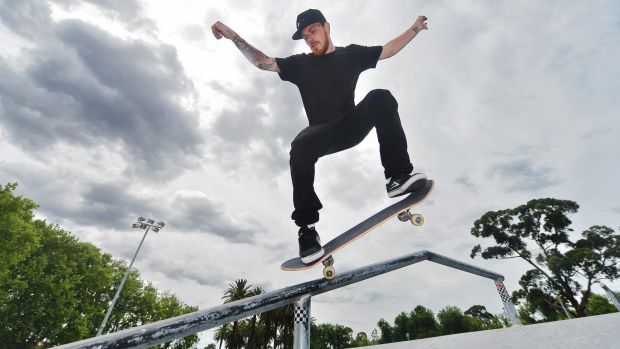
Academy award: Skateboarder Josh Hodge at Riverside skate park. Photo: JOE ARMAO
The number of children hospitalised due to serious injuries from skateboarding and riding scooters has climbed sharply, a new study has found.
The study also suggested that three-wheel push scooters, a popular toy for three and four year olds, may not be safe for that age group.
Monash University’s Injury Research Institute analysed Victorian hospital data and found admissions for skateboard-related injuries had jumped 180 per cent between 2006-07 and 2011-12, from 148 to 298. Scooter-related hospitalisations leapt 270 per cent, from 86 to 248.
The true number of injuries is not recorded because the data did not include patients who were treated in emergency departments and then discharged. Patients included in the study sustained more serious injuries and averaged a two-night hospital stay, the study authors said.
Study author Angela Clapperton said she was surprised by the figures. “I expected an increase but not of that magnitude,” she said.
The most injury-prone age group for skateboarders was 10 to 14 year olds and forearm or wrist fractures were the most common injuries. The worst cases could result in deformity or disability, said Clapperton and co-author Erin Cassell. “The more serious ones were open fractures (where the bone pierces the skin), or fractures that involved both bones of the forearm,” Clapperton said.
About 10 per cent of skateboard-related hospital admissions were a result of head or facial injuries.
Clapperton and Cassell said wrist, elbow and knee guards should be worn by skateboarders and that mandatory helmet legislation should be considered. Skateboarding lessons for beginners were also recommended. And they said skateboarders should not ride in traffic. “Skitching”, which involves skateboarding while holding onto a moving car, has become notorious for causing serious injuries and deaths in Australia and overseas.
Victorian Skateboarding Association president Bernie Griffiths said participation rates were soaring in Victoria, which could explain the spike in hospitalisations. The Victorian Skate Park League numbered 50 participating venues – the biggest competition of its type in Australia, he said.
Kostas Pavlidis, 15, spends time at the skate park most Fridays after school, Saturdays and Sundays.
“You do think about injuries a bit when you are trying a new trick but most people know their limits and it’s just so addictive and fun.”
Kostas said he wore a helmet when he started skateboarding nearly three years ago but felt more confident now about his ability.
Josh Hodge, 24, has been skateboarding since his teens and has suffered several serious injuries, including broken neck vertebrae. But he never picks up his board thinking about the risks – he is solely focused on the highs.
“It’s like nothing else – every trick you land is like winning an academy award,” Hodge said.
Griffiths said helmets were compulsory in association-sanctioned competitions and the association recommended new or infrequent skateboarders always wear safety equipment. But the group did not support mandatory helmet legislation. “Education is a far better way to go,” Griffiths said. The association hopes to roll out an education program in Victorian schools next year.
Clapperton said the report also highlighted the dangers of three-wheel push scooters, a popular form of transport for pre-schoolers. Over the study period, 12 per cent of hospitalisations for scooter injuries were among under-fives. “Young children have under-developed motor skills, poor peripheral vision and judgment …and a high centre of gravity which puts them at risk of head injuries,” the report said.
To view the report, go to www.monash.edu.au/miri
